Nationality United States | Name Richard Tuttle Movies Art City #2: Simplicity Role Artist | |
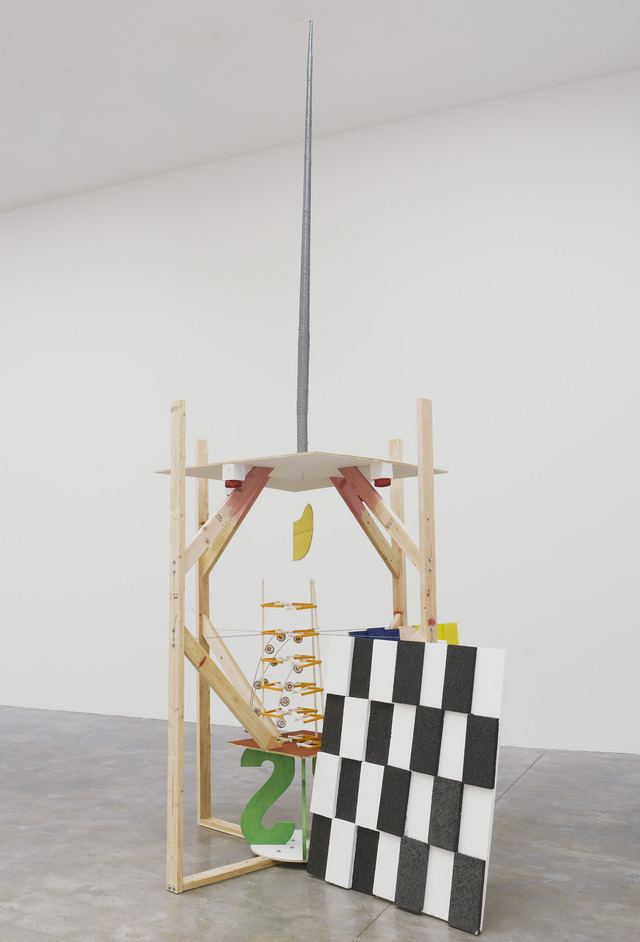 | ||
Notable work Paper Octagonals (1970), Artwork Letters (The Twenty-Six Series) Periods Contemporary art, Postminimalism, Modern art Known for Painting, Sculpture, Installation art | ||
Richard tuttle artists are like clouds
Richard Dean Tuttle (born July 12, 1941) is an American postminimalist artist known for his small, subtle, intimate works. His art makes use of scale and line. His works span a range of media, from sculpture, painting, drawing, printmaking, and artist’s books to installation and furniture. He lives and works in New York City, Abiquiú, New Mexico, and Mount Desert, Maine.
Contents
- Richard tuttle artists are like clouds
- Richard tuttle
- Biography
- Textile works
- Exhibitions
- Collections
- Recognition
- Art market
- Personal life
- References

Richard tuttle
Biography
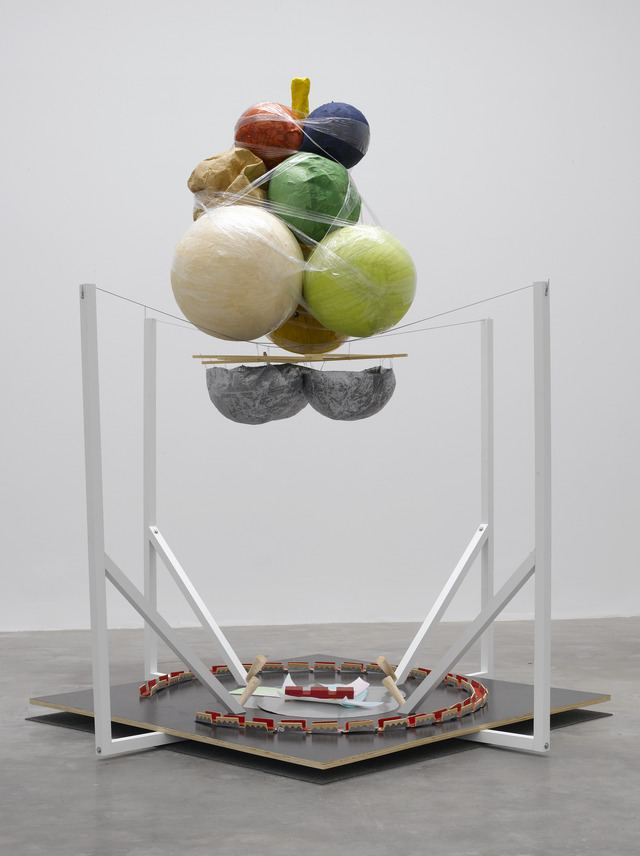
Tuttle was born in Rahway, New Jersey and raised in nearby Roselle. He studied art, philosophy and literature at Trinity College in Hartford, Connecticut from 1959 to 1963. After receiving his B.A. in 1963, he moved to New York where he spent a semester at the Cooper Union and had a brief stint in the U.S. Air Force. He then began working at the Betty Parsons Gallery. One year after taking a job as an assistant to Betty Parsons, she gave him his first show in 1965.
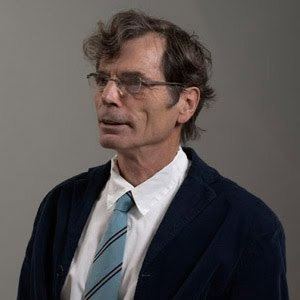
Tuttle's reputation as a master was secured in Europe as it swiftly embraced Tuttle's minimalist art. In the United States, however, acceptance of his work was slower. His works on paper are considered seminal works in American art. His first works, small monochrome reliefs, were followed by making palm-size paper cubes with cut-out designs and shaped wood reliefs that seemed like a twist on geometric abstraction. Beginning in the mid-1960s, he began to create eccentrically-shaped painted wood reliefs, followed by ideograms made of galvanized tin, and unstretched, shaped canvases dyed in offbeat colors. Tuttle had a survey exhibition in 1975 at the Whitney Museum of American Art. The exhibit was controversial and the show's curator Marcia Tucker lost her job as a result, after a scathing review by Hilton Kramer. Kramer, then art critic for The New York Times, wrote, referring to Ludwig Mies van der Rohe's dictum "less is more", "in Mr. Tuttle's work, less is unmistakably less ... One is tempted to say, where art is concerned, less has never been as less than this". According to art critic Christopher Knight of the Los Angeles Times, Tuttle's Wire pieces, which the artist made in 1971 and 1972, "collectively rank as his most distinctive contribution to art history". In 1983, Tuttle made Monkey's Recovery for a Darkened Room (Bluebird), a wall relief of branches, wire, cloth, string and wood scraps, which he says formally relates to Jan van Eyck's Crucifixion and Last Judgement diptych.
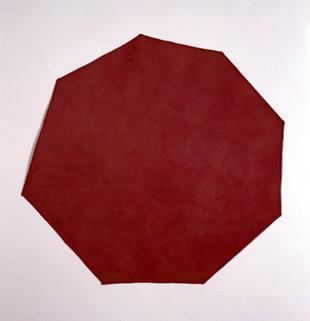
In the early 1980s, Tuttle embarked on an extensive series of suites of watercolors, The Loose Leaf Notebook Drawings. Each sheet consisting of a few strokes on low-grade loose leaf paper. The paints bleed and pooled, causing the paper to buckle, giving the works three-dimensionality. The illustration from the suite 5 Loose Leaf Notebook Drawings from 1980-1982, in the collection of the Honolulu Museum of Art, demonstrates how the suites challenge viewers to contemplate the distinction between fine art and trash. His works in the 1990s consisted mostly of smaller-sized work, followed by bodies of low-relief wall-bound pieces that integrate painting, sculpture, and drawing.
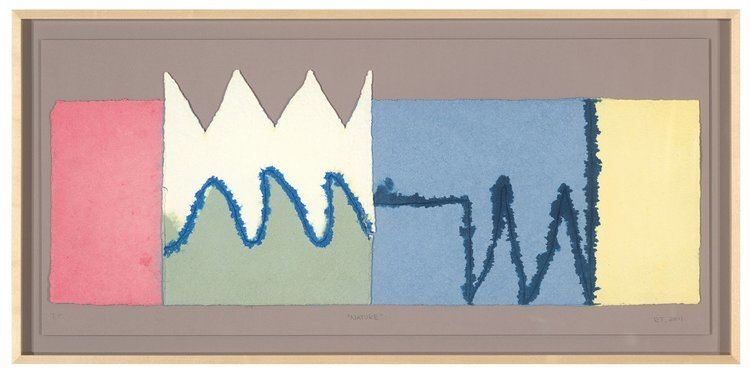
In 2004, Tuttle installed Splash, his first public art project, a mural 90 by 150 feet with about 140,000 pieces of colored glass and white ceramic tiles. It stretches up the side of a luxury condominium building designed by Walter Chatham for a private, guarded island community in Miami Beach called Aqua.
Textile works
During a residency at The Fabric Workshop and Museum in 1978, Tuttle embraced the silkscreen printing process and the idea of fabric to make a series of clothing — Shirts in 1978 and Pants in 1979. I Don’t Know, Or The Weave of Textile Language, on view at the Tate Modern in 2014, was made for the museum's turbine hall and is Tuttle's largest to date spanning nearly 40 feet in length. Featuring the textiles he designed and fabricated, the work is suspended from the ceiling in contrast to the hall’s industrial architecture.
Exhibitions
Tuttle's first major museum exhibition in 1975 was covering his first ten years of work organized by the Whitney Museum in New York. Tuttle has since been the subject of museum exhibitions around the world, and included in the Venice Biennale (1976, 1997, 2001), three documenta (1972, 1977 and 1987) and three Whitney Biennial exhibitions (1977, 1987, 2000). In 2005, the San Francisco Museum of Modern Art organized a major retrospective of Tuttle's 40-year career. The exhibition traveled to museums throughout the United States, including the Whitney Museum of American Art in November 2005. Tuttle continues a 20-year relationship with the Kunsthaus Zug in Zug, Switzerland, out of which have grown five exhibitions and many publications from catalogues to posters and ephemera.
An exhibition of his new fabric sculptures, Richard Tuttle: Walking on Air, was on view through April 25, 2009 at The Pace Gallery's 534 West 25th Street gallery. A series of his colored aquatints was on exhibit at the Dubner Moderne gallery in Lausanne, Switzerland from February 11 through March 15, 2010.
Collections
The Centre Georges Pompidou, the Hirshhorn Museum and Sculpture Garden, the Honolulu Museum of Art, Kunsthaus Zug (Zug, Switzerland), Kunstmuseum Winterthur (Winterthur, Switzerland), the Metropolitan Museum of Art, the National Gallery of Art (Washington, D.C.); Serralves (Porto, Portugal), the Stedelijk Museum Amsterdam, the Tate Modern, and the Whitney Museum of American Art (New York City) are among the public collections holding work by Richard Tuttle
Recognition
Tuttle has been the recipient of many awards for his work, including the 74th American Exhibition, Art Institute of Chicago Biennial Prize, the Skowhegan Medal for Sculpture in 1998, and the Aachen Art Prize in 1998 from the Ludwig Forum für Internationale Kunst. In 2012, he was elected to the National Academy and in 2013 he was invited to become a member of the American Academy of Arts and Letters. Tuttle was the artist in residence at the Getty Research Institute from September 2012 through June 2013.
He presented a lecture in collaboration with his poet wife, Mei-Mei Berssenbrugge, through the Visiting Artists Program at the School of the Art Institute of Chicago in April 2009.
Art market
Tuttle is represented by the Pace Gallery in New York, Galerie Schmela in Düsseldorf, and by the Annemarie Verna Galerie in Zurich. In 2002, a tin wall piece called Letters (The 26 Series) (1966) sold at auction for $1 million.
Personal life
Tuttle is married to the poet Mei-mei Berssenbrugge. For their residence in Abiquiú, New Mexico, they commissioned architect Steven Holl to design a 1,300-square-foot guest cottage, built between 2001 and 2005.
